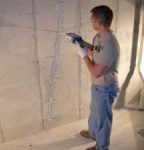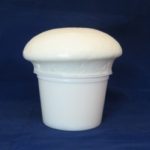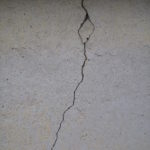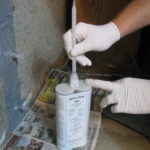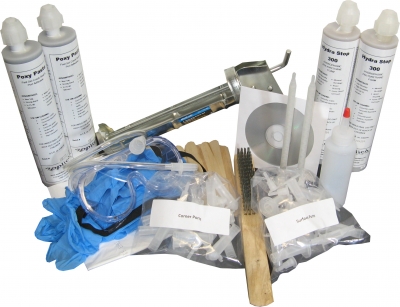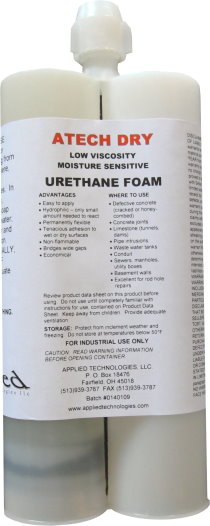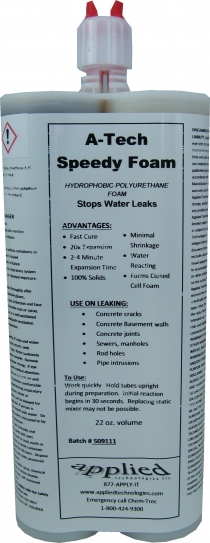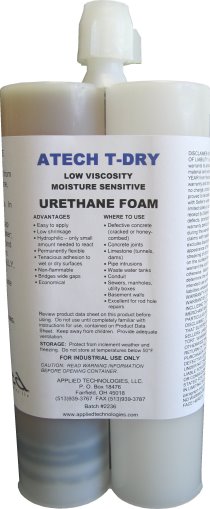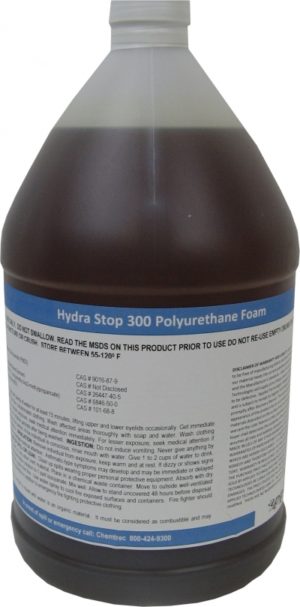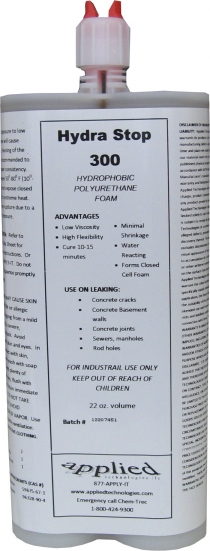Polyurethane Concrete Foundation Crack Repair Materials
Applied Technologies manufactures polyurethanes used to stop water leaks.
Concrete crack injection with polyurethane foam is the best way to stop a foundation wall crack leak. This is because the liquid urethane fills the entire foundation crack. Once inside the crack, it begins to foam and expand. The expanding foam completely fills it and prevents future water leaks. Water will now remain outside of the basement wall and not be able to penetrate into the interior.
A typical 8' foundation crack can be repaired in one hour. This is because there is no drilling or chiselling needed to widen the foundation crack. The low viscosity polyurethane can enter even hairline cracks with ease and stop your basement water leak.
- Closed cell foam stops basement water leaks
- Water stays outside of the basement
- Strong bond to foundation concrete
- Fills the basement wall crack entirely
- Easy to use
- No drilling or chiseling
To stop water from leaking into a concrete basement or concrete foundation crack, liquid urethane foam can be injected into it. On contact with water, the liquid urethane foams and expands inside the crack.
Concrete basement crack repair by urethane injection entirely fills the crack. Not only from the bottom to the top, but the entire width of the foundation wall. The water stays on the outside of the foundation and the basement contents are kept safe. The foam created is a closed-cell structure that will not allow water to work its way through the basement crack. The finished foam bonds tightly to the surrounding concrete to ensure that water does not push the foam out of the foundation crack. Once the urethane has foamed and expanded inside the foundation crack, water cannot leak into the basement again.
In comparison, a patch repair using hydraulic cement is much less reliable. Hydraulic cement must have the crack chiseled out into a vee-notch. This is a long and messy process. The chiseled out notch is only a few inches deep. The hydraulic cement cannot be placed into the entire width of the concrete wall. Therefore, water still gets into the basement crack from the outside. Over time salts develop which break the bond between the hydraulic cement and the existing concrete foundation. This allows water to leak again into the basement.
A patch repair covers the inside surface of a foundation crack. This is a weakly bonded repair that the water can push off of the wall and allow water to leak into the basement.
-
Concrete Crack Repair
A-Tech T-Dry Hydrophilic Polyurethane Foam 300cc x 300cc
$185.38 USD More Info

